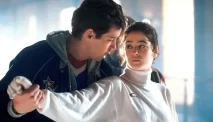Diksia.com - In the vast realm of literature, there are certain works that transcend time and continue to captivate audiences across generations.
Charles Dickens’ “Great Expectations” is undeniably one of those timeless classics, with its poignant storytelling and memorable characters leaving an indelible mark on readers for over a century.
However, it was not only in the realm of literature that this tale of love, ambition, and redemption found its resonance; it also made its mark on the silver screen.
In this article, we embark on a journey back to 1946 to explore the enduring appeal of “Great Expectations” as a remarkable film adaptation.
Setting the Stage for a Cinematic Masterpiece
In the mid-1940s, renowned director David Lean undertook the ambitious task of bringing Charles Dickens’ beloved novel “Great Expectations” to life on the silver screen.
With an impeccable cast, lush cinematography, and a faithful adaptation of Dickens’ narrative, Lean created a film that not only captured the essence of the source material but also established itself as a cinematic masterpiece.
An Unforgettable Protagonist: Pip’s Transformation
At the heart of “Great Expectations” lies the unforgettable character of Pip, a young orphan who encounters the enigmatic Miss Havisham and falls in love with the bewitching Estella.
Lean’s adaptation beautifully portrays Pip’s journey of self-discovery and transformation, as he navigates the complexities of class, love, and identity.
John Mills’ portrayal of Pip is both nuanced and compelling, captivating the audience with his vulnerability and determination.
Evocative Atmosphere: The World of Dickens
One of the remarkable achievements of Lean’s adaptation is its ability to transport viewers into the atmospheric world of Charles Dickens’ Victorian England.
From the hauntingly dilapidated Satis House to the bustling streets of London, every set and location is meticulously crafted to evoke the novel’s rich tapestry.
The cinematography by Guy Green captures the gloomy, yet enchanting, ambiance, adding depth and authenticity to the narrative.
Memorable Performances: A Stellar Ensemble
A film adaptation is only as strong as its cast, and “Great Expectations” (1946) boasts a stellar ensemble that breathes life into Dickens’ memorable characters.
Alongside John Mills’ Pip, we witness Alec Guinness embodying the enigmatic and tormented Herbert Pocket, Valerie Hobson capturing the haunting allure of Estella, and Jean Simmons delivering a haunting portrayal of the young Estella.
Each performance contributes to the film’s emotional depth and serves as a testament to the remarkable talent involved.
Adaptation Fidelity: Honoring Dickens’ Vision
Translating a literary work into a visual medium is a delicate balance, but Lean’s adaptation remains faithful to Dickens’ vision.
The screenplay, penned by Lean and Ronald Neame, captures the essence of the novel’s themes and characters, ensuring that the film remains true to its source material.
While some adjustments were made to fit the constraints of the medium, the core elements that make “Great Expectations” a beloved novel are thoughtfully preserved.
Conclusion
Great Expectations (1946) not only resonated with audiences upon its release but has continued to be celebrated as a timeless classic.
Its enduring appeal lies in its ability to capture the universal themes of love, ambition, and redemption, presented through unforgettable characters and a masterful adaptation.
The film stands as a testament to the power of storytelling, both on the page and on the silver screen, and remains an essential part of cinematic history.






